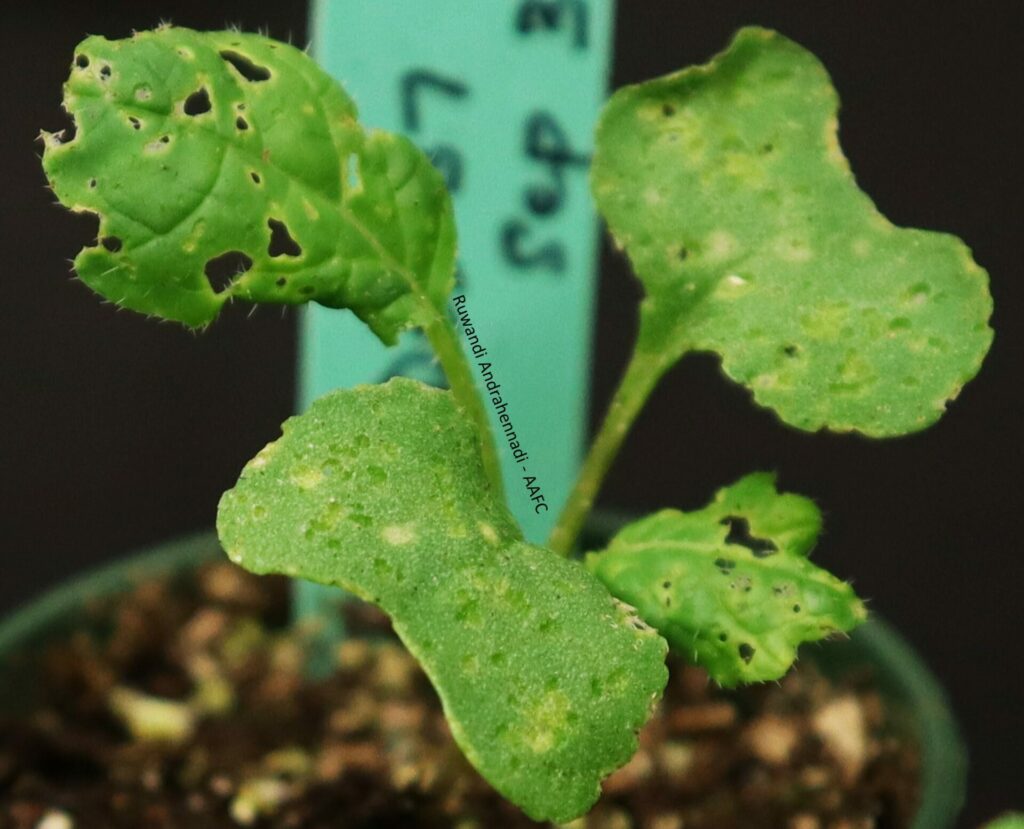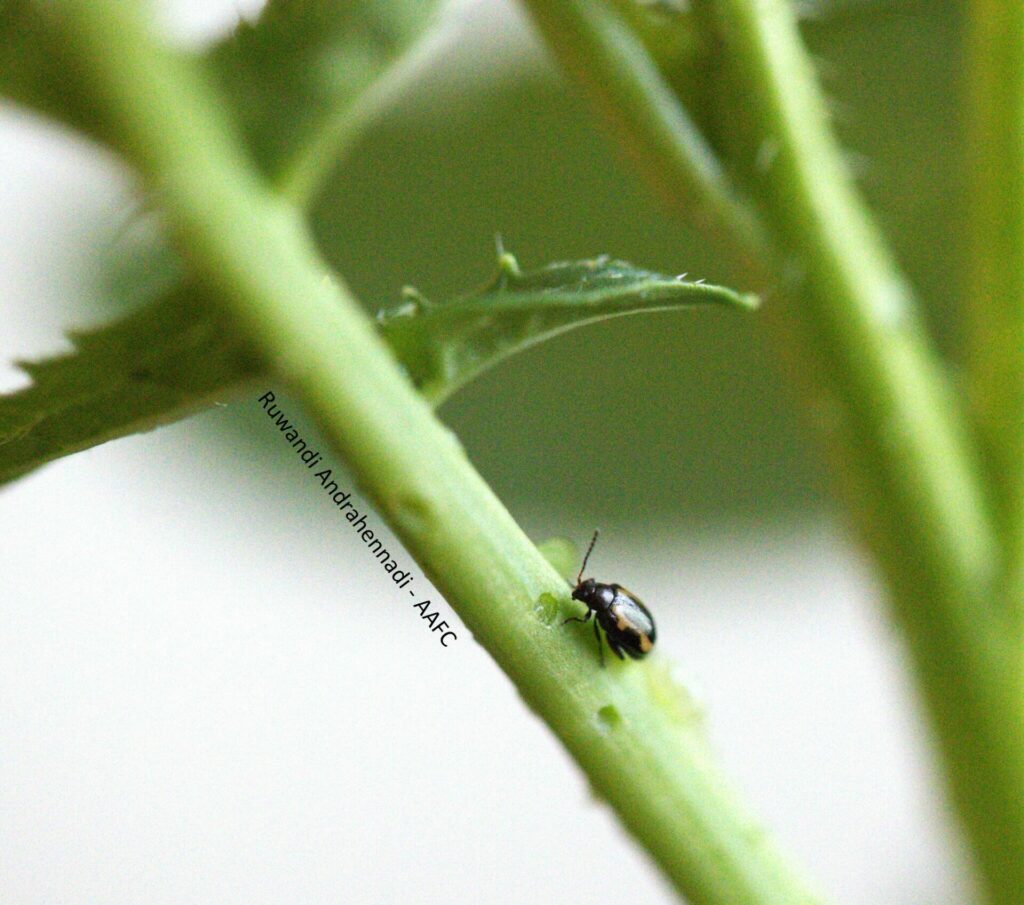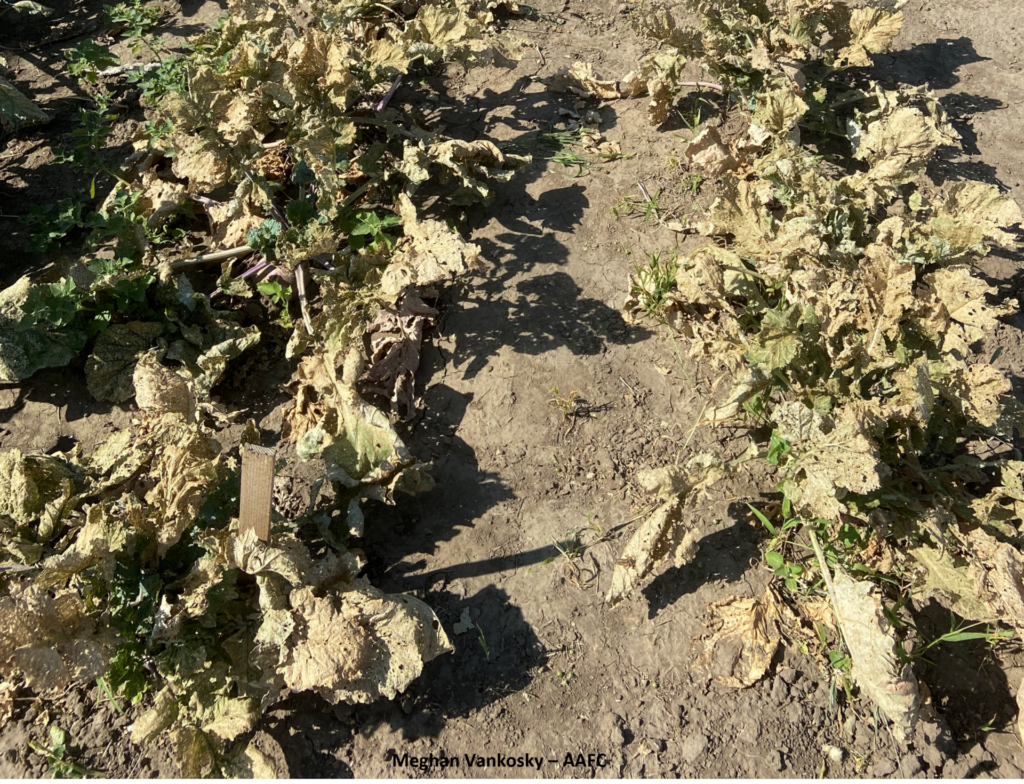The striped flea beetle and crucifer flea beetle are two of the most important pests of canola (and other Brassicaceae) in western Canada, especially early in the growing season. Adult flea beetles spend the winter sheltered under leaf litter, generally along field margins. In spring, adults disperse into crop fields to eat, mate, and lay eggs. For more information about the biology of flea beetles, click here.

Flea beetle feeding damage has a characteristic ‘shot-hole’ appearance on the cotyledons, as pictured above. Flea beetle feeding damage can also be observed on the first true leaves (also with a ‘shot-hole’ appearance) and on the stem and growing point of the seedlings.

To scout for flea beetles, examine seedlings for the characteristic ‘shot-hole’ feeding, starting at the field margin. Scout often, as flea beetles can move into fields quickly. The action threshold for applying foliar insecticides for flea beetle is met when 25% of the cotyledon area has been eaten. Visit the Canola Council of Canada Canola Encyclopedia for tools to help estimate defoliation by flea beetles.
Flea beetles can also cause damage later in the summer when the new generation of flea beetles emerges and are looking for food before winter. The feeding damage looks the same as the damage in the spring. High densities of flea beetles feeding on plants late in the season can cause plants to ripen prematurely and feeding damage on pods can contribute to yield loss via pod shatter.

